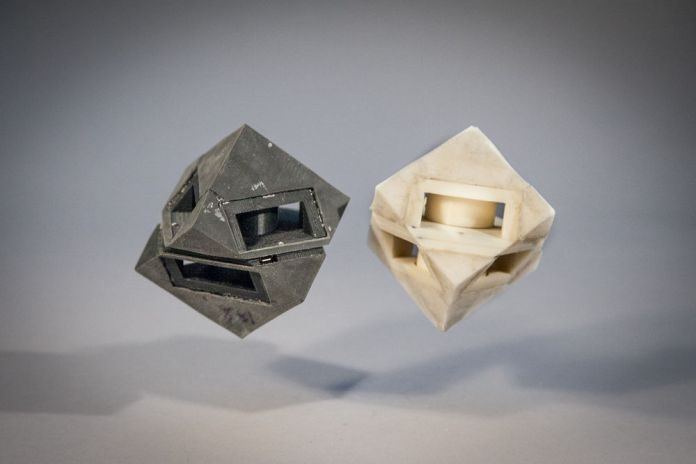Scientists from MIT’s Computer science and Artificial Intelligence Laboratory (CSAIL) are developing a new method for 3-D printing soft materials. The technique is called as programmable viscoelastic material (PVM) technique. This technique can make 3D-printed robots safer and more accurate in their movements. It even could improve the durability of drones, phones, shoes, helmets, and more.
This PVM technique enables users to program each part of a 3D-printed object, like 3D-printed robots, to the levels of stiffness and elasticity. It relies on the task they need to do for it. For example, scientists outfitted a 3D-printed cube robot with shock-absorbing skins.
The cube robot includes a rigid body, two motors, a microcontroller, a battery, and inertial measurement unit sensors. Four layers of looped metal strip serve as the springs that propel the cube.
CSAIL Director Daniela Rus said, “That reduction makes all the difference for preventing a rotor from breaking off a drone or a sensor from cracking when it hits the floor. These materials allow us to 3-D print robots with visco-elastic properties. It can be loaded by the user at print-time as part of the fabrication process.”
This skin allows the robot to land more accurately. It suggests that similar shock absorbers could be used to help extend the lifespan of delivery drones.
There are lots of reasons for outing dampers on things. The most common type of damper is Viscoelastic. But they are generally only commercially available in specific sizes and at specific damping levels. Because they consume lots of time to customize. So, this was a big problem.
Scientists overcome this problem through the 3D printing technique. 3D printing allows users to “program” material to their exact needs for every single part of an object with different mechanical properties.
Lipton said, “It’s hard to customize soft objects using existing fabrication methods. You need to inject moulding or some other industrial process. 3D printing opens up more possibilities and lets us ask the question, ‘can we make things we couldn’t make before?”
Scientists then used a solid, liquid flexible rubber-like material called TangoBlack+ to print the cube and its skins. For this, they used a standard 3D printer. The PVM process is related to Rus’ previous 3D printed robots work, with an inkjet depositing droplets of different materials layer-by-layer and then using UV light to solidify the non-liquids.
Professor Had Lipson said, “By combining multiple materials to achieve properties that are outside the range of the base material, this work pushes the envelope of what’s possible to print. On top of that, being able to do this in a single print job raises the bar for additive manufacturing.”
This PVM technique could have many other possible applications. For example, shock-absorbing running shoes and headgear. By damping the motion brought about by robots’ motors. For example, PVMs can protect sensitive parts like cameras and sensors. They even can make the 3D printed robots easier to control.
MacCurdy says, “programming different regions of an object has important implications for things like helmets. You could have certain parts made of materials that are comfortable for your head to rest on and other shock-absorbing materials for the sections that are most likely to be impacted in a collision.”
